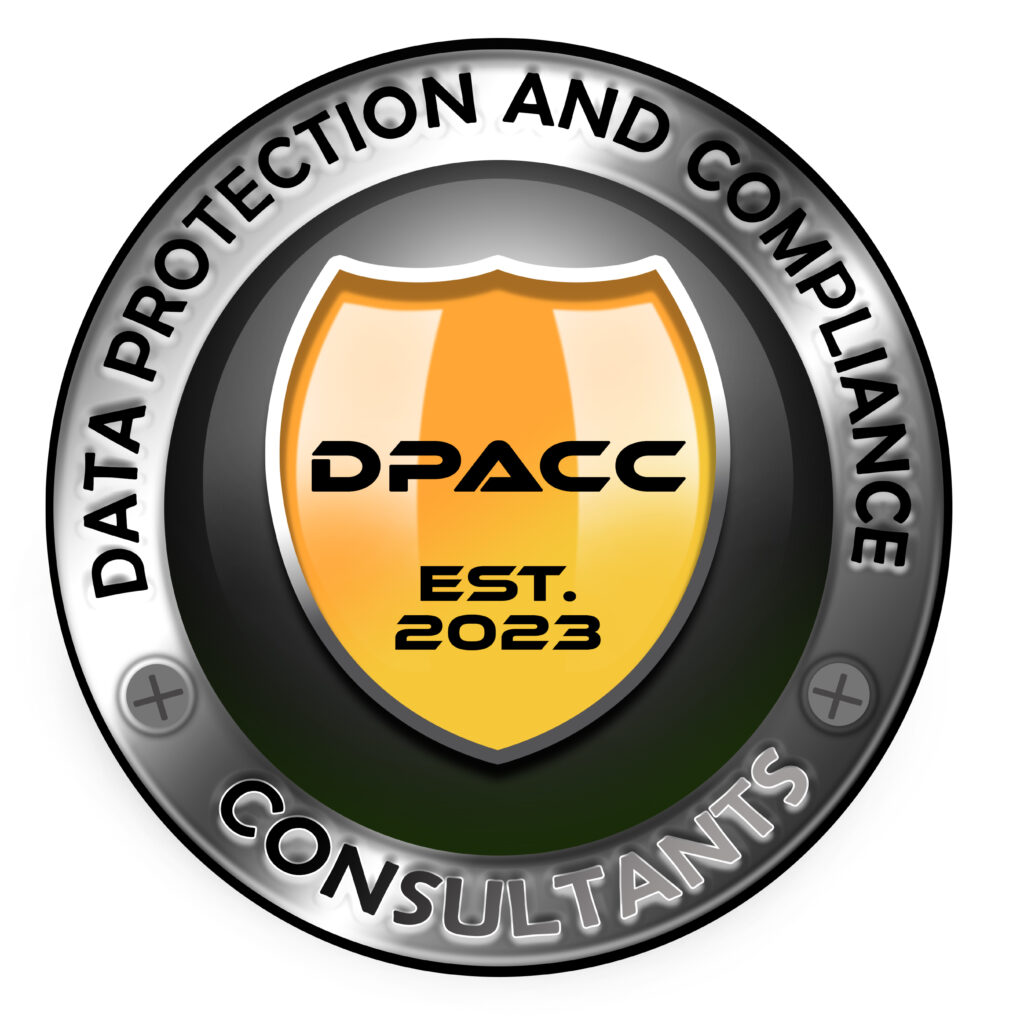Our Specialities
The following are the services offered and their descriptions:
- Gap Analysis
- Data Protection Impact Assessment
- Data Protection Training
- Data Protection Policies and Procedures
- Risk Assessment and Audit
- External Data Protection Officer (DPO)
- Incident Response and Breach Management
- Data Protection Compliance Monitoring Software
- AML/CFT Training and Awareness Program
Data protection training involves educating individuals within an organization about the importance of safeguarding personal data and the procedures and practices necessary to ensure compliance with data protection laws and regulations. This training typically covers topics such as the principles/standards of data protection, relevant regulations (e.g., JDPA, GDPR, CCPA, etc.), handling sensitive information securely, recognizing and responding to data breaches, and the rights of individuals regarding their personal data.
The aim of data protection training is to raise awareness among employees about their responsibilities when handling personal data, reduce the risk of data breaches and non-compliance, and foster a culture of privacy and data protection within the organization. Training sessions may be conducted through workshops, online courses, seminars, or other educational formats, tailored to the specific needs and roles of different individuals within the organization.
A data protection gap analysis is a systematic assessment of an organization’s current data protection practices compared to established standards, regulations, or best practices. It involves identifying discrepancies or “gaps” between what is currently being done to protect data and what should be done according to legal requirements, industry standards, or internal policies.
This analysis typically involves reviewing policies, procedures, technologies, and organizational practices related to data security, privacy, and compliance. The goal is to identify areas where data protection measures may be lacking or not fully compliant with applicable regulations (such as JDPA, GDPR, CCPA, etc.), industry standards, or organizational objectives.
By conducting a data protection gap analysis, your organizations can gain insights into their data protection posture, prioritize areas for improvement, and develop strategies to enhance data security, minimize risks, and ensure compliance with relevant regulations and standards.
A data protection impact assessment (DPIA) is a systematic process used to identify, assess, and mitigate privacy risks associated with the processing of personal data. It’s typically conducted before the implementation of new processes, systems, or technologies that involve the processing of personal data.
During a DPIA, your organization will evaluate the potential impact of your data processing activities on individuals’ privacy rights and freedoms. This assessment involves identifying the nature, scope, context, and purposes of the data processing, as well as assessing the likelihood and severity of any risks to individuals’ privacy.
The goal of a DPIA is to help organizations identify and address privacy risks early in the planning process, ensuring that data processing activities are conducted in compliance with applicable data protection laws and regulations (such as JDPA, GDPR, etc.). By conducting DPIAs, organizations can enhance transparency, accountability, and trust in their data processing practices, while also minimizing the risk of data breaches and other privacy-related incidents.
Data protection policies and procedures are a set of documented guidelines and protocols established by an organization to govern the handling, processing, and protection of personal data. These policies outline the organization’s commitment to data protection, define roles and responsibilities, and establish procedures for ensuring compliance with relevant data protection laws and regulations.
Data protection policies typically cover a range of topics, including data collection and retention, data access controls, data security measures, data breach response protocols, and individual rights regarding their personal data. These policies provide clear guidance to employees on how to handle personal data responsibly, securely, and in accordance with legal requirements.
Procedures, on the other hand, are the specific steps and actions that employees must follow to implement the data protection policies effectively. These may include processes for obtaining consent for data processing, securely storing and transmitting data, responding to data subject requests, conducting risk assessments, and reporting data breaches.
By establishing robust data protection policies and procedures, organizations can demonstrate their commitment to protecting individuals’ privacy rights, minimize the risk of data breaches and non-compliance, and build trust with customers, partners, and other stakeholders.
A data protection risk assessment and audit are processes designed to identify, evaluate, and manage risks related to the handling of personal data within an organization.
- Risk Assessment: This involves identifying potential threats, vulnerabilities, and consequences associated with the processing of personal data. It evaluates the likelihood and impact of these risks on individuals’ privacy rights and organizational objectives. The goal is to prioritize risks and implement measures to mitigate or eliminate them.
- Audit: A data protection audit involves reviewing and assessing an organization’s data protection policies, procedures, and practices to ensure compliance with relevant laws, regulations, and internal policies. It examines how personal data is collected, stored, processed, and shared, as well as the effectiveness of security controls and measures in place. The audit identifies areas of non-compliance or weakness and provides recommendations for improvement.
Both processes are essential for organizations to proactively manage data protection risks, ensure compliance with legal requirements, and maintain the trust of customers, stakeholders, and regulatory authorities.
An External Data Protection Officer (DPO) serves as an independent advisor and expert in data protection matters for organizations. With a deep understanding of data protection laws and regulations, the External DPO provides guidance, oversight, and support to ensure that organizations comply with legal requirements and best practices related to the handling of personal data.
As an external consultant, the DPO offers unbiased insights and recommendations, helping organizations navigate complex data protection landscapes and mitigate risks effectively. By outsourcing the role of DPO, organizations can access specialized expertise without the overhead costs of maintaining an in-house position, ensuring that they meet regulatory obligations while focusing on their core business activities.
Whether it’s developing data protection policies, conducting risk assessments, or facilitating employee training, the External DPO acts as a trusted partner, dedicated to safeguarding individuals’ privacy rights and fostering a culture of data protection within the organization.
Data protection incident response and breach management encompass the procedures and protocols implemented by organizations to effectively detect, respond to, and mitigate the impact of data breaches and security incidents involving personal data.
In the event of a data breach or security incident, swift and decisive action is crucial to minimize harm to individuals’ privacy rights and mitigate potential legal, financial, and reputational consequences. Data protection incident response involves the following key steps:
- Detection: Organizations utilize monitoring tools, security systems, and incident detection mechanisms to promptly identify any unauthorized access, disclosure, or loss of personal data.
- Assessment: Upon detection, a thorough assessment is conducted to determine the nature and scope of the incident, including the type of data compromised, the extent of the breach, and potential risks to individuals’ privacy rights.
- Response: An organized response plan is activated, involving designated personnel and stakeholders. Immediate actions may include containment of the breach, notification of relevant authorities, and coordination with internal and external stakeholders.
- Notification: Depending on the severity and impact of the breach, affected individuals, regulatory authorities, and other relevant parties may be notified in accordance with legal requirements and best practices.
- Investigation: A comprehensive investigation is conducted to understand the root cause of the breach, identify vulnerabilities in existing systems or processes, and implement corrective measures to prevent future incidents.
- Remediation: Efforts are made to mitigate the impact of the breach, restore affected systems or data, and provide support to affected individuals, such as offering identity theft protection services or credit monitoring.
- Review and Improvement: Post-incident analysis is performed to evaluate the effectiveness of the response and identify areas for improvement in incident response procedures, data protection measures, and security controls.
By implementing robust incident response and breach management practices, organizations can demonstrate their commitment to protecting individuals’ privacy rights, maintain trust with customers and stakeholders, and mitigate the risk of regulatory sanctions and reputational damage.
A data protection compliance monitoring software is a tool or platform designed to help organizations manage and maintain compliance with data protection laws, regulations, and internal policies.
Key features of our software solutions typically include:
- Policy Management: Centralized management of data protection policies, procedures, and documentation to ensure alignment with legal requirements and best practices.
- Risk Assessment: Tools for conducting risk assessments and identifying potential vulnerabilities and gaps in data protection practices.
- Data Inventory: Capabilities to inventory and categorize personal data assets, including information on data types, sources, processing activities, and data subject rights.
- Compliance Monitoring: Monitoring and reporting functionalities to track adherence to data protection requirements, including access controls, data retention, consent management, and security measures.
- Incident Management: Incident tracking and reporting features to facilitate the management and resolution of data breaches, security incidents, and regulatory inquiries.
- Auditing and Reporting: Tools for conducting audits, generating compliance reports, and demonstrating accountability to regulatory authorities, auditors, and stakeholders.
- Training and Awareness: Resources for employee training, awareness campaigns, and ongoing education initiatives to promote a culture of data protection compliance within the organization.
By leveraging a data protection compliance monitoring software, organizations can streamline their compliance efforts, mitigate risks, and demonstrate a proactive approach to protecting individuals’ privacy rights and sensitive data.
AML/CFT (Anti-Money Laundering/Countering the Financing of Terrorism) training and awareness programs are initiatives implemented by financial institutions and regulated entities to educate employees about their obligations, responsibilities, and best practices in preventing money laundering and terrorism financing activities.
These programs typically include:
- Training Sessions: Formal training sessions conducted to educate employees on the legal and regulatory frameworks governing AML/CFT, including relevant laws, regulations, and industry standards. Training may cover topics such as customer due diligence, suspicious activity reporting, and risk assessment.
- Awareness Campaigns: Awareness campaigns aimed at promoting a culture of compliance and vigilance within the organization. These campaigns may involve distributing informational materials, posters, newsletters, and emails highlighting the importance of AML/CFT compliance and encouraging employees to report suspicious activities.
- Scenario-Based Exercises: Interactive exercises and case studies designed to simulate real-world AML/CFT scenarios and enhance employees’ ability to identify suspicious transactions, behaviours, and patterns.
- Role-Specific Training: Tailored training programs for employees based on their roles and responsibilities within the organization. For example, frontline staff may receive training on recognizing red flags during customer interactions, while compliance officers may undergo advanced training on regulatory requirements and reporting obligations.
- Regular Updates and Refresher Courses: Ongoing updates and refresher courses to keep employees informed about changes in AML/CFT regulations, emerging trends, and best practices. These courses ensure that employees remain up-to-date with evolving risks and compliance requirements.
AML/CFT training and awareness programs are essential for financial institutions and regulated entities to fulfil their legal obligations, mitigate risks associated with financial crime, and protect the integrity of the financial system. By investing in employee education and awareness, organizations can strengthen their AML/CFT controls and contribute to global efforts to combat money laundering and terrorism financing.

